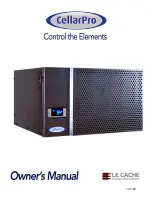
S15
Pre-Installation and Site Preparation Guide
Page 38 of 46
Loring Smart Roast Proprietary – This document is controlled by
Document Control. By printing this document, it will become a “Reference” copy.
Users are responsible for verifying that it is the latest revision available.
1008236 Rev B
Installing the Vent Stack
Exhaust gases are produced during the roasting process that need to be vented to the atmosphere.
There are two sources of exhaust gas. Hot gas (products of combustion) through the cyclone
assembly passes up into the “Hot Stack.” Also, air is drawn through the hot beans in the cooler tray
to cool them is passed up the “Cooling Stack.”
To keep rain out of the stack, caps must be attached at the exit of the stacks and any joints in the
stack ducting must also be designed to keep rain out.
In general, a survey of the building will be made to determine where to position the roaster and how
then to position the stack ducting to vent exhaust gases to the atmosphere. In the following pages
are examples of common ducting configurations and techniques to provide ducting flexibility using
the 45-degree vent kits.
Hot Stack
The Hot stack connects to the top of the cyclone to the “Stack Hat” which is provided with the
roaster. From this stack hat, you can attach to the customer supplied stack by welding, clamping,
screwing, riveting and caulking. The best connection is with a V-Band. No amount of leakage is
acceptable.
The stack must be supported above and not by the roaster. Also, the effects of thermal expansion
should be taken into account so that thermal growth does not put force on the roaster.
Cooling Stack
The cooling stack will attach to the top of the cooler housing outlet, typically with a V-Band to a
flange fitting, or at the preference of the customer and contractor may be attached by a variety of
other methods. It is important that this connection is sealed but also easily removable for cleaning.
The roaster may have the optional 45-degree offset kit, which does not alter the connection type,
but allows for an easily removable and cleanable section.
Roaster Placement
The roaster should be placed on a level, solid and cleanable work surface. The ball swivel mount
leveling feet will allow the roaster to be leveled after it is put into position.
There may be regulations in your area which will mandate surface structure, anchoring, and
minimum clearances.
Getting Help
You will need to refer to your ventilation contractor for the preferred method of attachment. In turn,
your ventilation contractor will need to be sure to comply with all applicable local and regional
regulations regarding installations of this type.









































